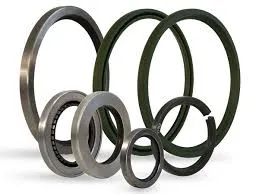8 月 . 30, 2024 13:07 Back to list
Cork Valve Cover Gasket - High-Quality Replacement for Your Engine
Understanding Cork Valve Cover Gaskets
Cork valve cover gaskets play a crucial role in the functioning of internal combustion engines. They serve as an essential sealing component placed between the valve cover and the cylinder head, preventing oil leaks and ensuring that the engine operates efficiently. In this article, we will delve into the characteristics, importance, and maintenance of cork valve cover gaskets.
What is a Cork Valve Cover Gasket?
A cork valve cover gasket is crafted from a composite material that primarily includes cork, often blended with rubber or other compounds for enhanced durability and flexibility. This material is chosen for its excellent compressibility, resilience, and resistance to oil, heat, and age-related wear. Cork gaskets have been utilized in automotive applications for many years, owing to their reliable properties and ease of installation.
Importance of the Valve Cover Gasket
The valve cover’s primary function is to house the valve train components while also acting as a protective cover for various engine parts. The valve cover itself is subject to numerous conditions, such as temperature fluctuations and exposure to engine oil and contaminants. Consequently, the valve cover gasket must maintain a tight seal to prevent oil from leaking out.
Oil leaks can lead to a multitude of issues in an engine. For example, low oil levels caused by leaks can result in inadequate lubrication, ultimately leading to engine wear or failure. Furthermore, oil leaks can create a mess under the hood and on the driveway, potentially causing safety hazards due to slick surfaces. By properly sealing the valve cover, a cork gasket helps maintain consistent engine performance and longevity.
Common Issues and Symptoms of a Failing Gasket
Like any automotive part, cork valve cover gaskets have a limited lifespan and can become subject to wear and damage. The most notable symptoms of a failing gasket include
cork valve cover gasket

1. Oil Leaks This is the most obvious sign of a gasket failure. Oil may seep down the sides of the engine or drip onto components underneath.
2. Burnt Oil Smell If oil leaks onto hot engine parts, it can produce a burnt smell, indicating that the oil is being heated beyond its normal threshold.
3. Engine Performance Issues A faulty gasket can lead to oil starvation in critical engine parts, potentially causing performance problems or unusual noises.
4. Visual Cracks or Wear Inspecting the gasket for cracks or brittleness can provide insight into its condition.
Maintenance and Replacement
Routine maintenance is key to ensuring that the valve cover gasket remains in good condition. Regularly checking for oil leaks and monitoring oil levels can alert an owner to potential issues before they escalate. If a valve cover gasket needs to be replaced, it is advisable to choose high-quality replacement parts.
While cork gaskets have been widely used, advancements in technology have led to the development of alternative materials such as silicone and rubber gaskets, which may offer better longevity and performance. However, cork gaskets retain their popularity in classic cars and specific engine applications due to their traditional characteristics and compatibility.
In summary, cork valve cover gaskets are vital components that help maintain engine integrity by preventing oil leaks. Regular maintenance and timely replacement can ensure that an engine operates smoothly, preserving its performance and longevity. Car enthusiasts and everyday drivers alike should be aware of the significance of this often-overlooked part in their vehicles.